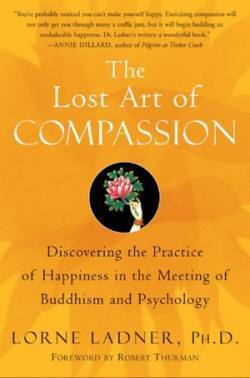Doug Dillon's Blog, page 169
December 14, 2012
“A Refreshing Paranormal Book.” YA & Historical Too.
The St. Augustine Trilogy: Book I
A review placed on Goodreads by
Elle
Sliding Beneath the Surface is a refreshing paranormal book without the cliche romance in the teenage market. When I say refreshing! I mean I’m glad that Jeff didn’t start smooching on Clara like his lips were going to shrivel and die in a few days (bad imagery, sorry about that :/)…Ahem…most Paranormal books are romances with paranormal aspects not the other way around! So that was a relief. Thank the lord!
Jeff Golden(boy with basically no parents, just a negligent mother)and spitfire Clara (his interest whom he keeps ogling) go to a weird man named Lobo’s house. At this crazy eccentric man’s house the two friends to learn how to control their powers and dreams for a adventurous mission into the past.
Great Premise huh? Time Travelers , Different Realms…
Hold on…..All of this is prepping for a mission that happens 75% into the book! Dillon’s descriptions and details of the past are so…kick-ass. The climax was like blam! You’re done.
To see Elle’s full review on Goodreads, click here.
December 13, 2012
The Lost Art of Compassion
Author – Lorne Ladner, Ph.D.
A Washington, D.C. clinical psychologist in private practice
Director of the GUHYASAMAJA Buddhist Center in Northern Virginia
Harper San Francisco, 304 p.
Even though author Lorne Ladner is Buddhist and combines concepts from his spiritual practice with professional psychological guidance, you don’t have to be Buddhist to find value in his words. This book is a beautiful blend of East and West that truly gets to the heart of how the implementation of compassion in one’s life can lead to happiness.
Essentially, Ladner presents compassion as a vital part of psychological stability and viable spiritual practice. Smoothly written, this book plunges right to the heart of daily living and shows how working on relationships of all kinds through the use of compassion ends up being beneficial to all.
Ladner uses examples from his own life and offers readers very practical exercises in the enhancement of their compassionate outlooks. These sample chapter titles give you a taste for what he has to say: “Compassion for Yourself”; “Seeing Through Projections”; and “Joyfully Losing an Argument”.
To be perfectly honest, I found this book of such tremendous value that I took all the underlining I did in it and created a little mini-handbook that I still refer to periodically. The author’s words rang so true for me that I occasionally send quotes from his work out over Twitter. In closing, I’ll leave you with these words from Ladner, my favorite:
“Heartfelt kindness toward someone who has just treated you badly has the clean, pure feeling of a cool creek in the high mountains.”
Click here to find this book online.
The Lost Art of Compassion: Discovering the Practice of Happiness in the Meetring of Buddhism and Psychology
Author – Lorne Ladner, Ph.D.
A Washington, D.C. clinical psychologist in private practice
Director of the GUHYASAMAJA Buddhist Center in Northern Virginia
Harper San Francisco, 304 p.
Even though author Lorne Ladner is Buddhist and combines concepts from his spiritual practice with professional psychological guidance, you don’t have to be Buddhist to find value in his words. This book is a beautiful blend of East and West that truly gets to the heart of how the implementation of compassion in one’s life can lead to happiness.
Essentially, Ladner presents compassion as a vital part of psychological stability and viable spiritual practice. Smoothly written, this book plunges right to the heart of daily living and shows how working on relationships of all kinds through the use of compassion ends up being beneficial to all.
Ladner uses examples from his own life and offers readers very practical exercises in the enhancement of their compassionate outlooks. These sample chapter titles give you a taste for what he has to say: “Compassion for Yourself”; “Seeing Through Projections”; and “Joyfully Losing an Argument”.
To be perfectly honest, I found this book of such tremendous value that I took all the underlining I did in it and created a little mini-handbook that I still refer to periodically. The author’s words rang so true for me that I occasionally send quotes from his work out over Twitter. In closing, I’ll leave you with these words from Ladner, my favorite:
“Heartfelt kindness toward someone who has just treated you badly has the clean, pure feeling of a cool creek in the high mountains.”
Click here to find this book online.
December 11, 2012
“Might Scare the Bajibers Out of Ya.”
The St. Augustine Trilogy: Book I
A review placed on Goodreads and Amazon by
Suzanne Pringle from Canada
When I think of Ghost stories, I usually think of hauntings or possessions. I think scary, terrifying or even sometimes unrealistic. This book put a new spin on the whole ghost haunting – you story.
We have a boy, Jeff, with a very special gift. That gift takes him on a 2 day journey with what started out as horrifying nightmares. He shares these nightmares with his neighbor, African American girl named Carla. She too has a special gift. Her other neighbour, Lobo, has helped her with her special gifts, so the two trot over to see Lobo only to find themselves on a terrifying yet accelerating adventure.
I liked the fact that we see the Ghost, not as a devil or spiritual thing, but as a real human who happened to be caught in the afterlife. The Ghost seeks out Jeff to help him find rest and peace in the afterlife.
I would definitely let my teens read this book. It is clean, has little swearing, yet has a few small graphic scenes that might scare the Bajibers out of ya :)
Overall a great book…
To see Suzanne’s review on Amazon.com, click here.
December 10, 2012
Carl Jung and the Paranormal, Part 12: The Final Breakthrough
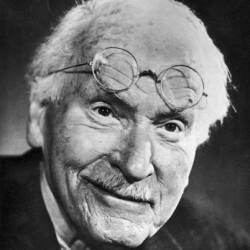 This post is the final one of a series on the paranormal experiences of Carl Jung, founder of Analytic Psychology.
This post is the final one of a series on the paranormal experiences of Carl Jung, founder of Analytic Psychology.
For the initial posting that began this series, click here.
 In 1944, Carl Jung broke his foot. Not only that, he also had a devastating heart attack. Near death in a hospital, he proceeded to have visions that changed his life.
In 1944, Carl Jung broke his foot. Not only that, he also had a devastating heart attack. Near death in a hospital, he proceeded to have visions that changed his life.
These visions that came and went were so strong he knew he must be close to dying even though no one said this to him . His outlook got reinforced when a nurse told him she saw a bright glow all around his body.

Photo courtesy of NASA
At one point in his visions, Jung found himself high in space, looking down at the earth. Put simply, this is what he saw:
The blue light of earth and the deep, rich colors of the land areas
The continent of Asia below him
Snow on top of the Himalaya Mountains
The Arabian Peninsula
Part of the Mediterranean
Remember, this was 1944, way before the age of orbiting space craft and artificial satellites. When Jung later asked a friend in the scientific community about what he saw, the friend told him that the only way anyone could actual see such things would be from 1000 miles in space.

Space art courtesy of NASA
Into his vision a gigantic, dark chunk of stone appeared. As he stared at it, Jung noticed an entrance. Attracted to the entrance, he went through it and found a room where an Asian man dressed in white was 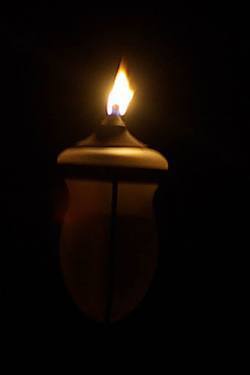 meditating. There were little niches in the walls all around the room containing oil lamps.
meditating. There were little niches in the walls all around the room containing oil lamps.
As Jung approached the man, all sorts of strange things occurred:
His entire earthly existence seemed to wash away as if the essence of who he was had been annihilated.
Everything he had ever done, seen or planned left him completely. An extremely painful experience at first.
Finally, as he realized he had been stripped of his identity, he also understood that he no long needed or wanted anything at all.
At that point, he accepted what was happening and realized the loss of his identity didn’t matter.
 Suddenly, Jung’s awareness shifted and he found himself about to enter a huge temple. He knew without a doubt he would soon be meeting people inside the temple who had the answers to all of his questions. Finally, he would truly understand his existence.
Suddenly, Jung’s awareness shifted and he found himself about to enter a huge temple. He knew without a doubt he would soon be meeting people inside the temple who had the answers to all of his questions. Finally, he would truly understand his existence.

Photo courtesy of NASA
Again, Jung had his awareness yanked in another direction before he could actually get inside the temple. Once again, he saw the earth far below him. But as he stared at it, he noticed something odd in the region of Europe.
Something seemed to be between him and that portion of the earth. Whatever the “something” was, it appeared to be getting bigger and coming towards him.
 When :it” finally arrived, the object turned out to be the doctor who was treating Jung in the hospital. Immediately, Jung recognized the strength of his doctor’s spirit that allowed him to make the journey all the way from earth.
When :it” finally arrived, the object turned out to be the doctor who was treating Jung in the hospital. Immediately, Jung recognized the strength of his doctor’s spirit that allowed him to make the journey all the way from earth.
Instantly, the doctor and Jung began to communicate–telepathically. The doctor told Jung that the earth had asked him to be its representative. This, the doctor said, was a protest against Jung’s impending death.
As soon as the doctor delivered his message, the vision collapses and Jung was back in his hospital bed and back to his very painful illness.
 It took three weeks for Carl Jung to really make up his mind that he truly wanted to live. In fact, he initially developed an almost violent resistance to his doctor because Jung blamed the man for spiritually pulling him away from death’s door. When he was finally able to let that blame go, Jung started worrying about his doctor. He came to believe that the man’s life was in danger because his spiritual trip up into space from Europe had drained so much of his life force.
It took three weeks for Carl Jung to really make up his mind that he truly wanted to live. In fact, he initially developed an almost violent resistance to his doctor because Jung blamed the man for spiritually pulling him away from death’s door. When he was finally able to let that blame go, Jung started worrying about his doctor. He came to believe that the man’s life was in danger because his spiritual trip up into space from Europe had drained so much of his life force.
After listening to Jung’s description of the vision and the possible danger, the doctor dismissed it all as hallucinations. Angrily, Jung argued with the man, trying desperately to save his life. Those discussions went nowhere.
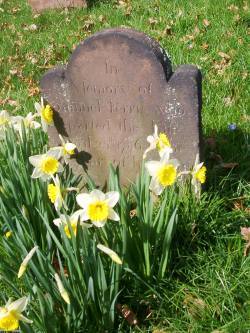 Turned out that Carl Jung was his his doctor’s last patient. Once Jung had fully decided to live and was able to sit on the edge of his hospital bed, his doctor died.
Turned out that Carl Jung was his his doctor’s last patient. Once Jung had fully decided to live and was able to sit on the edge of his hospital bed, his doctor died.
According to Jung, the time after his illness was the most insightful and productive of his career. He died in 1961.
For those who are interested in Jung’s theory of synchronicity, here’s one for you. Last week, I broke a bone in my foot. Until I sat down a while ago to write this article, I had actually forgotten about Jung’s broken foot. The heart attack hasn’t occurred yet and I would just as soon allow the coincidences between me and Jung to stop at one.
For other postings about Carl Jung’s supernatural journeys, go to the blog category titled, “Paranormal and Carl Jung.”
December 9, 2012
“Super Exciting!” YA Paranormal and Historical
The St. Augustine Trilogy: Book I
A review placed on Goodreads and Amazon by Ariel from Tennessee, USA
Sliding beneath the surface is another one of those books that really stands out, to me at least, as an original piece. Doug Dillon does a great job incorporating history of St. Augustine into this book, and let me tell you…I’m not one for history…But he made it interesting. Of course, I’m not sure how much of it is actually true?? *guess she’ll have to look that up >.>*
Following Jeff Golden, you see this story as told from his perspective. And boy was Dillon right on the money in portraying a 15 year old’s mind!! Through this series you learn about Jeff’s past, Carla’s past and Lobo is kind of their guide through their “now” journey. The weird dreams, the alternate realities, copied images of people that they make themselves, ghosts, shaman’s…and the list goes on. This book keeps you on your toes every step of the way.
I loved Sliding beneath the surface and I believe that people who like ghost stories and paranormal books will too! Give it a try, Dillon won’t let you down!!
Click here to find Ariel’s review on Amazon.
December 8, 2012
“A Fun, Historic Read.” YA, Paranormal and Historical.
The St. Augustine Trilogy: Book I
A review placed on Goodreads and Amazon by
Helena
This book is very different than anything I’ve read recently. I normally don’t read books with a male lead. I have to admit, that was a bit weird at first, but I got the hang of it eventually and liked it. I usually don’t read books that are historic. It’s not that I dislike history, I just usually stick to certain aspects of history, and this isn’t one of those time frames.
Overall, I really enjoyed the story. The story telling seemed as delicate as the carved balls in the story, and at times I felt like I was missing a piece, but then it all slid into place.
This book also didn’t seem like a YA book. To me that’s fine, as I’ve technically aged past that group, but the characters seemed much older than their given age, which did throw me off at first.
Overall, I did enjoy this book, and would suggest it for anyone that would like a paranormal twist to a historic storyline.
To see Helena’s full review on Amazon.com, click here.
December 7, 2012
Carl Jung and the Paranormal, Part 11: The Mosaics
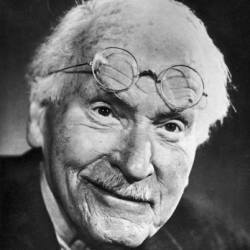 This post is one of a 12-part series on the paranormal experiences of Carl Jung, founder of Analytic Psychology.
This post is one of a 12-part series on the paranormal experiences of Carl Jung, founder of Analytic Psychology.
For the initial posting that began this series, click here.
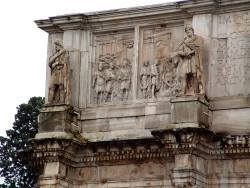 The Galla Placidia Mausoleum in Italy is a Roman structure built around 430 AD and known for its beautiful mosaics. Carl Jung visited the place twice in his life. .
The Galla Placidia Mausoleum in Italy is a Roman structure built around 430 AD and known for its beautiful mosaics. Carl Jung visited the place twice in his life. .
On the first visit in 1913, Jung enjoyed his time there but felt strange for some reason he couldn’t put his finger on. End of that story.
The second visit occurred in 1933 when Jung went there with a friend. The same feeling of unease slid over him but again, he found no reason for it. As if that weren’t enough, he noticed a blue light in one room that seemed to have no source. Brushing both incidents aside, he went on to enjoy his tour of the mausoleum.
 As Jung and his friend entered another room, they saw four very attractive biblical mosaics where Jung has seen windows on his first visit. Realizing he must have missed those particular panels back in 1913, he began to question his memory. Even so, the two people stood there studying the newly found pieces of art and talked about them for twenty minutes.
As Jung and his friend entered another room, they saw four very attractive biblical mosaics where Jung has seen windows on his first visit. Realizing he must have missed those particular panels back in 1913, he began to question his memory. Even so, the two people stood there studying the newly found pieces of art and talked about them for twenty minutes.
After leaving the mausoleum, Jung went to a store in order to buy picture post cards of those mosaics to take home with him. Sadly, he couldn’t find any and no one seemed to know what he was talking about.
So impressed was Jung with those four mosaics, he even mentioned them in some of his lectures after he returned home.
Sometime later, he asked a friend who was planning a trip to Italy, and visiting the Galla Placidia Mausoleum, to buy him the post cards he couldn’t find. The friend agreed but upon his return, he told Jung that no such biblical panels existed. Instead, the man found the missing windows just as Jung recalled from 1913.
In writing about this experience many years later, Jung still marveled about it and said that the memory of those four mosaics continued to burn brightly in his mind.
For other postings about Carl Jung’s supernatural journeys, go to the blog category titled, “Paranormal and Carl Jung.”
December 6, 2012
A Message from a Paranormal Realm, Part 6
In our paranormal nonfiction book, An Explosion of Being, my wife Barbara and I decided to include a chapter channeled directly from another realm of reality. The title of that chapter was, “To the Reader from a Source with No Name”. Actually, we did have a name of sorts. We simply called it The Source.
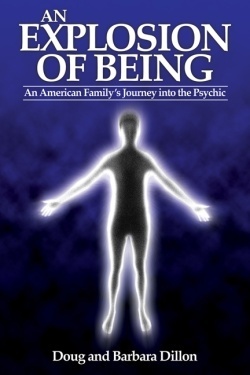 The idea was to give readers a more personalized, direct link in the unknown. Now, after many years, I am extending that connection to readers of my blog in series of 11 bite-sized portions. Your inclusion into our private network of communications is offered openly, with hopes that you might feel just a touch of your own infinite connections.
The idea was to give readers a more personalized, direct link in the unknown. Now, after many years, I am extending that connection to readers of my blog in series of 11 bite-sized portions. Your inclusion into our private network of communications is offered openly, with hopes that you might feel just a touch of your own infinite connections.
If you would like to find the other 10 postings in this series, just look for them in the blog category titled, Paranormal Communications.
“As you each begin to welcome yourselves into this lifetime, you will see a truer pattern for your existence there. Your needs will seem somewhat smaller in the way of material items, as they will not be at the end of your goal structure any longer. Fortunately, your present system of incurring debts does have its alternating realities also. By this, your reality that is seen primarily extensively through material needs and sacrifices will mature in itself, through the testing that will take place within your being.
 “You connection with these authors (of An Explosion of Being) is not only limited to your reading this book. Actually, its limitations go far beyond your current understanding of any fenced area. You will be seen by these people (the authors) in other realities to have permanent ties with them, even through ‘minute’ ways.
“You connection with these authors (of An Explosion of Being) is not only limited to your reading this book. Actually, its limitations go far beyond your current understanding of any fenced area. You will be seen by these people (the authors) in other realities to have permanent ties with them, even through ‘minute’ ways.
“A challenging effort of your souls has been linked to a previous existence when each of you was straining for further knowledge. This knowledge now comes as a source of easy access. This has become a primary reason for your interacting. Your logical, spiritual progression has intertwined with the need for further development through a physical means.
“With the actual reading of this material, you each will therefore be in connection with the authors of this book. Your daily connection is irrelevant as to their physical premises, but you shall maintain an awareness that will be sensed by some who have finally come into contact with them physically. At this point, there will be an immediate rejuvenation of a lost purpose for both sides of your beings (physical and spiritual).
“The interconnection of your beings is also locked with another mass of people who are watching your eventualities take place under the current level of opposition to this material. There will be some of you who do not wish to await the presence of any further understanding. However, as your negation takes place, your viewing of the spiritual connections remains a fact.”
To find our book online, just click on the title, An Explosion of Being: An American Family’s Journey into the Psychic.
December 5, 2012
Left Me Wanting to Know More of What Happens
 Young Adult, Paranormal and Historical.
Young Adult, Paranormal and Historical.
The St. Augustine Trilogy: Book I
A review placed on Goodreads, Amazon, Barnes and Noble and Library Thing by Isis from Vermont
“I just finished reading the first volume of The St. Augustine Trilogy, “Sliding Beneath the Surface,” and must say I was impressed. The storyline caught my attention early on and kept it for the remainder of the book, increasing in intensity as we drew toward the conclusion.
“This creative YA book is told from the point of view of a teenager – but a boy this time. Jeff moves to a new town thanks to his father’s gambling problems that basically wiped the family out financially. One of the first friends he makes is Carla, who happens to be black (nice to see a bit more diversity in a YA book today – if you don’t count paranormal diversity that is). Carla introduces Jeff to Lobo and this is where the story really starts moving, maintaining a decent pace throughout.
“Aside from some minor allusions to romance, at its core this is a story about discovery – both internal & external, plus beginning to learn his own boundaries and what he is capable of. The end of the book was good, and could probably stand alone, but left me wanting to know more of what happens, and to learn right along with Jeff & Carla.
“I found this story entertaining and a solid read. Not only is it a good read for those in the YA category, it also has the ‘legs’ to cross into tradition fiction. That being said, I would still list it in the YA section of any library.”
To see Isis’ full review on Amazon, click here.

